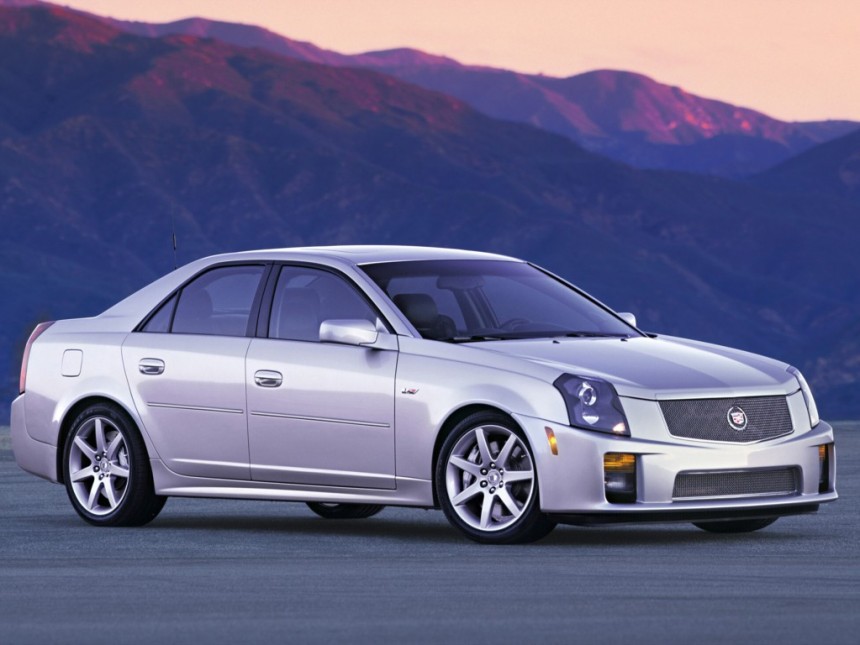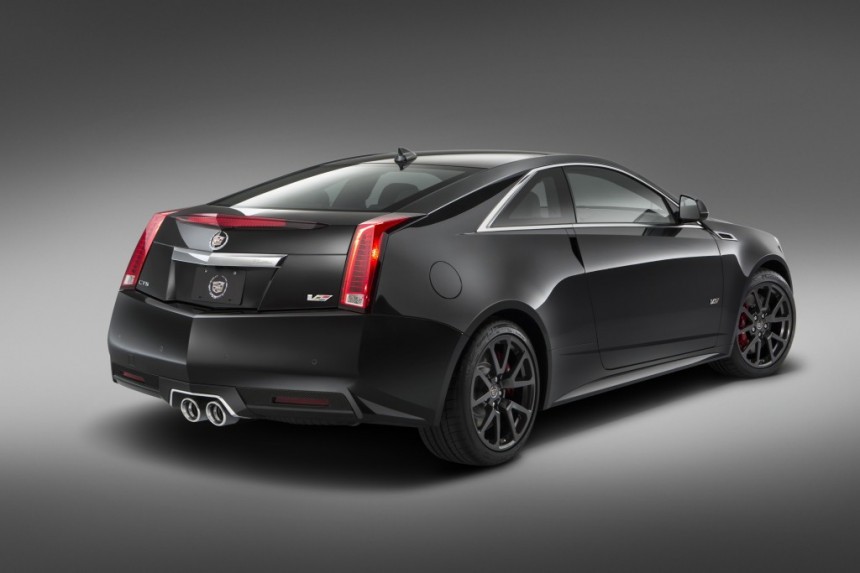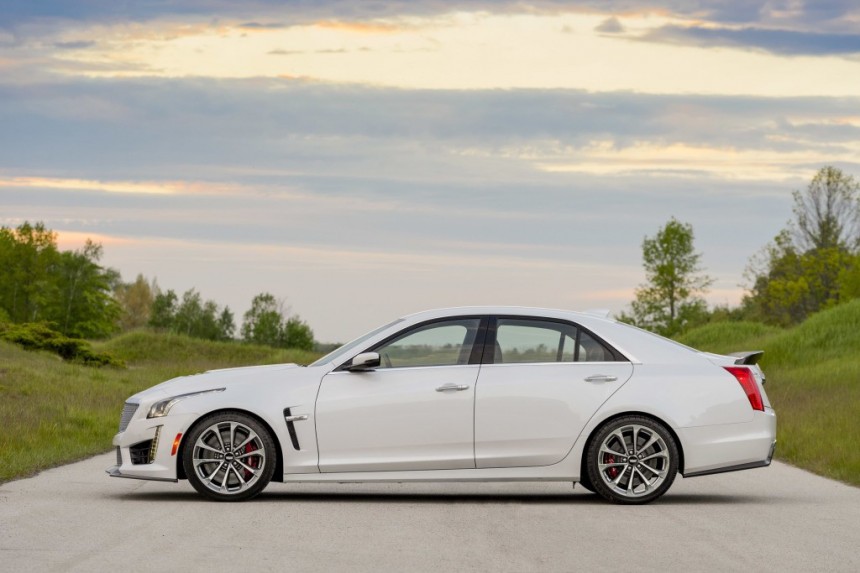A luxury-oriented sedan that builds on the Cadillac brand’s vast heritage in a bold way, the CTS is hard to describe in a single sentence. Introduced in 2002 for the 2003 model year to mixed reception, the Catera Touring Sedan was the first series-production Cadillac to feature the Art and Science design language previewed by the Evoq concept car from the 1999 Detroit Auto Show.
The first Caddy to be offered with a manual transmission after the disastrous Cimarron from the 1980s, the Catera Touring Sedan replaced – as implied by its name – the Catera. Offered between 1996 and 2001 for the 1997 through 2001 model years, the Catera was a sorry excuse for a Cadillac, a badge-engineered Opel Omega that was manufactured in Germany rather than the U.S. of A.
General Motors is no stranger to badge engineering, something that everyone and their dog is doing today in the automotive industry. But as opposed to the likes of the Volkswagen Group, the GM way of badge engineering is beyond lazy. Both the Cimarron and the Catera were hardly different from their stablemates, and both of them sold poorly due to negligible visual differences and General Motors’ poor quality record.
The biggest automaker of the Big Three in Detroit learned a few valuable lessons from the Cimarron and Catera. Not only did General Motors opt for a Cadillac-exclusive platform, but the Sigma-based CTS leveled up from the sole V6 of the Catera to V6s and a couple of V8s for the CTS.
Developed specifically to compete with the E-segment trio comprising the Mercedes-Benz E-Class, BMW 5 Series, and Audi A6, the CTS also faced stiff competition from Acura and Lexus in the guise of the RL and ES. Although promising on paper, the first generation tanked in terms of sales. In the United States, it moved 49,392 units back in 2003, its first full calendar year on sale.
U.S. models were produced exclusively stateside at Lansing Grand River Assembly in Michigan where General Motors currently makes Alpha-based vehicles. The ATS-replacing CT4 and CTS-replacing CT5 open the list, followed by the Chevrolet Camaro. According to reports, General Motors doesn’t intend to roll out a seventh-generation Camaro. There are wild rumors in regard to a full-electric sedan bearing this nameplate, but alas, no prototypes of said electric sedan or the next-gen pony car have been spied as of the moment of writing.
The CTS was joined by a high-performance sibling for the 2004 model year, the very first member of the V series of go-faster machines. The CTS-V is best viewed as America’s response to the M5 and E 55. But as opposed to the DOHC valvetrains of the V8s in the M5 and E 55, the CTS-V rocks a good ol’ pushrod engine.
Both the 5.7-liter LS6 and Tremec T-56 were borrowed from the C5-generation Chevrolet Corvette Z06, which is why period reviews of the CTS-V often describe the luxury sports sedan as a four-door Corvette. The 6.0-liter LS2 of the C6 Corvette would replace the LS6 for the 2006 model year. Even though it carries the same peak horsepower and pound-feet numbers as the LS6, the newer engine produces peak torque 400 rpm sooner.
Come January 2007, the second-generation CTS was revealed with great pomp and circumstance at the North American International Auto Show in Detroit. Sharper yet more elegant than its predecessor, the Catera Touring Sedan also took the touring part of its name more seriously. General Motors didn’t make it softer, though, but actually improved the way it handles thanks to a few suspension-related improvements and wider tracks.
Sigma II is what General Motors named the platform of the second-generation CTS, which was used exclusively by it. Longer and wider than Sigma I, this architecture also borrowed a few parts from the Zeta platform developed by GM’s Australian subsidiary Holden for the VE-generation Commodore and Ute. The Zeta was also used for the Chevrolet SS, Camaro, and Caprice.
A grand total of four transmissions were employed, beginning with the in-house designed 6L50 for the CTS and heavier-duty 6L90 for the torquier CTS-V. The row-your-own crowd was offered an Aisin-sourced manual for the CTS and a Tremec unit for the V-series model.
The second-generation CTS was the only CTS to be offered in three body styles. The sedan was joined by a five-door station wagon for 2010, then by a coupe for 2011. All three were available in CTS-V flavor. The LSA supercharged small block is similar in design to the LS9 that premiered in the 2009 model year Corvette ZR1.
General Motors gave the CTS one more chance with the Alpha platform-based third generation, which failed to steal customers away from German and Japanese rivals. It sold extremely poorly throughout its production life, and even the CTS-V failed to exceed – or even match - the sales figures of its processors. More specifically, CTS-V sales fell from 19,454 units for the second generation to a rather disappointing 4,703 examples.
Expected to be retired after production of the CT4 and CT5 comes to a screeching halt, the Alpha platform makes the third-generation CTS the best-handling CTS of them all. Previously offered with six-cylinder lumps as standard, the Catera Touring Sedan downsized to a four-cylinder turbo engine with 272 horsepower and 295 pound-feet (400 Nm) on deck for its final generation.
The next engine up was a 3.6-liter V6 of the naturally-aspirated variety, bearing regular production order code LFX. It was replaced for 2016 by the LGX, described by General Motors as an all-new design. The LF3 twin-turbo sixer was exclusive to the CTS Vsport, which is best described as Cadillac’s idea of a BMW M Performance vehicle. In addition to the high-output V6 engine, the Vsport trim level also included a quicker steering ratio, summer-only performance tires, Brembo brakes, heavy-duty cooling, a track mode, MRC calibrations, and an electronic limited-slip differential.
As for the poor-selling CTS-V, the most powerful and torquiest CTS-V of them all is equipped with the LT4 supercharged small block that – say it with me now - launched in the C7-generation Chevrolet Corvette Z06. Closely related to the naturally-aspirated LT1 of the Corvette Stingray, the LT4 continues to serve GM’s premier marque in the Escalade-V sport utility vehicle and the CT5-V Blackwing that succeeded the CTS-V.
General Motors is no stranger to badge engineering, something that everyone and their dog is doing today in the automotive industry. But as opposed to the likes of the Volkswagen Group, the GM way of badge engineering is beyond lazy. Both the Cimarron and the Catera were hardly different from their stablemates, and both of them sold poorly due to negligible visual differences and General Motors’ poor quality record.
The biggest automaker of the Big Three in Detroit learned a few valuable lessons from the Cimarron and Catera. Not only did General Motors opt for a Cadillac-exclusive platform, but the Sigma-based CTS leveled up from the sole V6 of the Catera to V6s and a couple of V8s for the CTS.
First generation (model years 2003 to 2007)
U.S. models were produced exclusively stateside at Lansing Grand River Assembly in Michigan where General Motors currently makes Alpha-based vehicles. The ATS-replacing CT4 and CTS-replacing CT5 open the list, followed by the Chevrolet Camaro. According to reports, General Motors doesn’t intend to roll out a seventh-generation Camaro. There are wild rumors in regard to a full-electric sedan bearing this nameplate, but alas, no prototypes of said electric sedan or the next-gen pony car have been spied as of the moment of writing.
The CTS was joined by a high-performance sibling for the 2004 model year, the very first member of the V series of go-faster machines. The CTS-V is best viewed as America’s response to the M5 and E 55. But as opposed to the DOHC valvetrains of the V8s in the M5 and E 55, the CTS-V rocks a good ol’ pushrod engine.
Both the 5.7-liter LS6 and Tremec T-56 were borrowed from the C5-generation Chevrolet Corvette Z06, which is why period reviews of the CTS-V often describe the luxury sports sedan as a four-door Corvette. The 6.0-liter LS2 of the C6 Corvette would replace the LS6 for the 2006 model year. Even though it carries the same peak horsepower and pound-feet numbers as the LS6, the newer engine produces peak torque 400 rpm sooner.
Second generation (model years 2008 to 2015)
Sigma II is what General Motors named the platform of the second-generation CTS, which was used exclusively by it. Longer and wider than Sigma I, this architecture also borrowed a few parts from the Zeta platform developed by GM’s Australian subsidiary Holden for the VE-generation Commodore and Ute. The Zeta was also used for the Chevrolet SS, Camaro, and Caprice.
A grand total of four transmissions were employed, beginning with the in-house designed 6L50 for the CTS and heavier-duty 6L90 for the torquier CTS-V. The row-your-own crowd was offered an Aisin-sourced manual for the CTS and a Tremec unit for the V-series model.
The second-generation CTS was the only CTS to be offered in three body styles. The sedan was joined by a five-door station wagon for 2010, then by a coupe for 2011. All three were available in CTS-V flavor. The LSA supercharged small block is similar in design to the LS9 that premiered in the 2009 model year Corvette ZR1.
Third generation (model years 2014 to 2019)
Expected to be retired after production of the CT4 and CT5 comes to a screeching halt, the Alpha platform makes the third-generation CTS the best-handling CTS of them all. Previously offered with six-cylinder lumps as standard, the Catera Touring Sedan downsized to a four-cylinder turbo engine with 272 horsepower and 295 pound-feet (400 Nm) on deck for its final generation.
The next engine up was a 3.6-liter V6 of the naturally-aspirated variety, bearing regular production order code LFX. It was replaced for 2016 by the LGX, described by General Motors as an all-new design. The LF3 twin-turbo sixer was exclusive to the CTS Vsport, which is best described as Cadillac’s idea of a BMW M Performance vehicle. In addition to the high-output V6 engine, the Vsport trim level also included a quicker steering ratio, summer-only performance tires, Brembo brakes, heavy-duty cooling, a track mode, MRC calibrations, and an electronic limited-slip differential.
As for the poor-selling CTS-V, the most powerful and torquiest CTS-V of them all is equipped with the LT4 supercharged small block that – say it with me now - launched in the C7-generation Chevrolet Corvette Z06. Closely related to the naturally-aspirated LT1 of the Corvette Stingray, the LT4 continues to serve GM’s premier marque in the Escalade-V sport utility vehicle and the CT5-V Blackwing that succeeded the CTS-V.










































